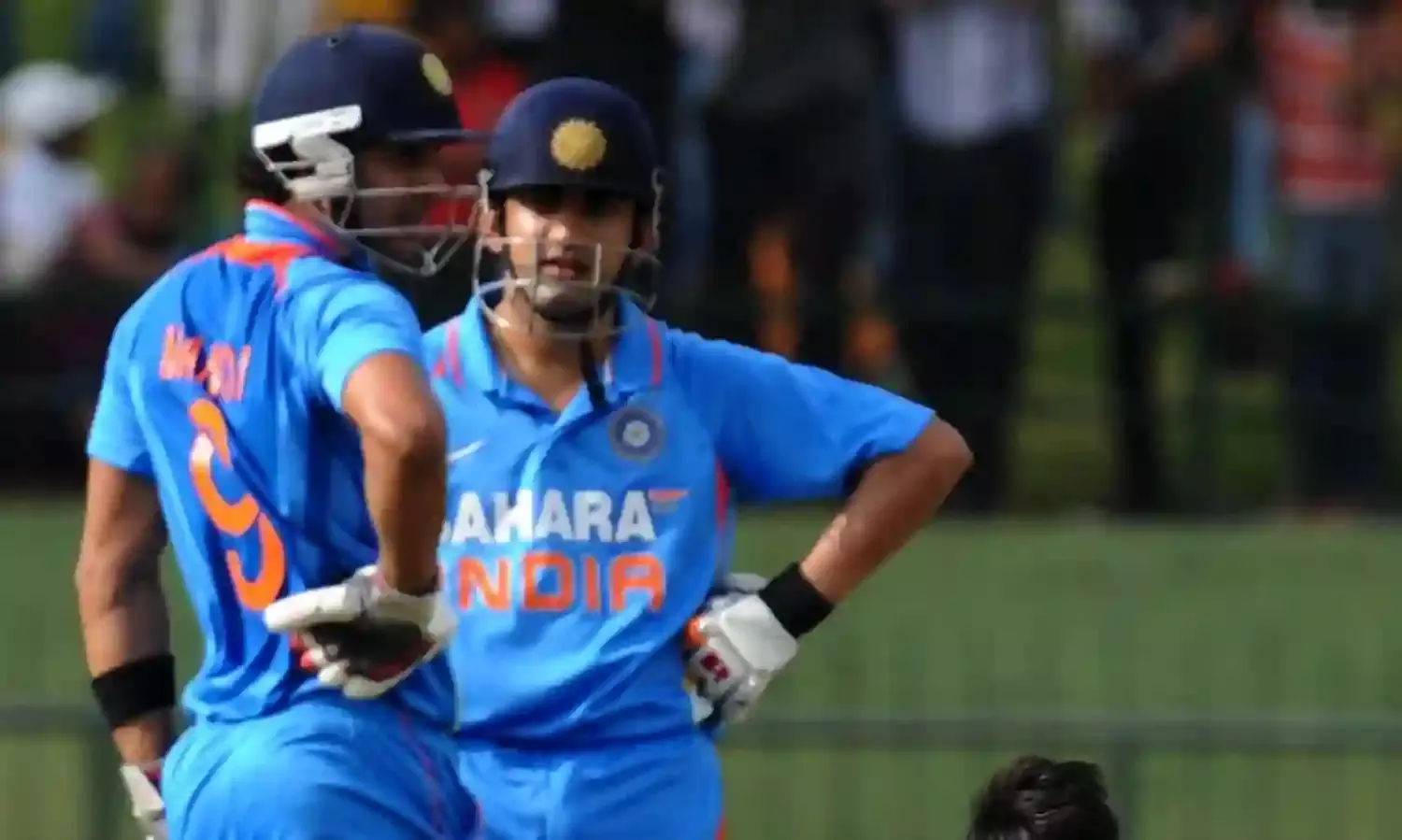Gutsy Gambhir Left His Mark on Indian Cricket
Grit and hard work won

Guts and Gautam Gambhir always went together.
The pugnacious left handed opening batsman was a hard as nails street fighter who was ready for a scrap when provoked. No showing the other cheek for him. But the toughness was also ingrained into his batting approach. His wicket really had to be earned. He just hated getting out and loved scoring runs.
This made him an ideal member of the Indian team for over a decade during which he excelled in all three formats of the game. It is not everyone who can achieve this but Gambhir had the happy knack to adjust his game and come good in both the traditional format or the shorter versions.
Symbolizing this is the fact that Gambhir has given us one knock in each format to remember him by. His 75 in the inaugural World Twenty20 tournament final against Pakistan in 2007 went a long way in India clinching the title.
Four years later his 97 was instrumental in India winning the Fifty50 World Cup final against Sri Lanka. And in between in 2009 came perhaps his greatest knock – a monumental 137 against New Zealand in the Napier Test for which he batted 643 minutes and faced 436 balls while helping India to draw a match that seemed lost.
There was a time when Gambhir could do no wrong with the bat and his proudest moment came about when he was adjudged the ICC Test player of the year in 2010. His elevation to the exalted status underlined the importance of hard work and an ideal temperament. Gambhir might not have been as gifted as Sachin Tendulkar, may have lacked Rahul Dravid’s impeccable technique, Sehwag’s flair for strokeplay or VVS Laxman’s elegance. But he made up for all this by a hunger for success and the ability to rise to the occasion when the chips were down.
When it came to building an innings Gambhir belonged to the old school possessing the age old qualities of dedication, determination and concentration. Initially after making his Test debut on a minefield of a pitch at the Wankhede stadium against Australia in 2004 he was in and out of the side.
Over the first 14 Tests spread over almost four years Gambhir had the modest figures of 692 runs at an average of almost 33 with just one hundred. In the next eleven Tests spread through 2008 and 2009 Gambhir could do little wrong. At home and away against Australia, England, Sri Lanka and New Zealand he ran up runs and big scores in a manner that had followers of the game rubbing their eyes in disbelief.
Figures clearly illustrate his mastery over the bowling for in these matches he amassed 1579 runs at an average of 75 with five hundreds (inclouding a double century) and his career average jumped to 57.
Between 2008 and 2010, Gambhir made at least one half-century in 11 consecutive Test matches, equalling the record of Vivian Richards, who had achieved the same feat in 1976-1977. In that period, Gambhir also hit centuries in five consecutive Tests in 2009-10, the joint second-longest such streak.
During the 12-month voting period that saw him get the ICC Test player of the year award Gambhir amassed 1269 runs at an impressive average of 84.60 in the eight Tests he played. He scored five centuries and four half-centuries during the purple phase.
Initially Gambhir was the small boy among the big men. By 2010 he was well on his way to upstaging the big men. He became the most talked about cricketer in the land and his successful batting approach was analysed by the experts. By then he was no longer in and out of the team but had become a permanent fixture – as permanent as the superstars. With Sourav Ganguly having retired it was now the ''Fab Five’’ with Gamhhir, Sehwag, Dravid, Tendulkar and Laxman.
Gambhir struck up an excellent understanding with Sehwag and the two emerged as the most successful Indian opening pair ever in Test cricket with 4412 runs from 87 innings from 2004 to 2012 at a highly impressive averge of 52.5. Their tally is the fifth best for any pair of opening batsmen in Tests.
Gambhir’s outstanding Test record overshadows his feats in the shorter versions of the game. He was one of the early successes in T-20 internationals and in ODIs shaped many notable victories as his record of 5238 runs with eleven hundreds and a strike rate of 85 will illustrate. Two of his proudest moments came about when he was a member of the World Cup T-20 winning squad in 2007 and a member of the Fifty50 World Cup squad four years later.
It was unfortunate that Gambhir’s career nosedived from the high point of 2008-09 with the result that his average in both formats fell quite alarmingly and he finished with a shade below 42 in Tests and just below 40 in ODIs. Overall however Gambhir takes his place as among the successful Indian opening batsmen proving that even those less gifted can make it to the top through sheer hard work and determination.



